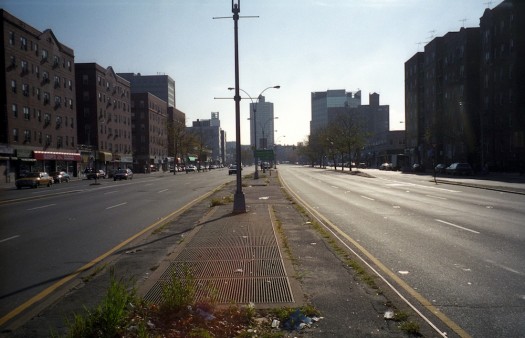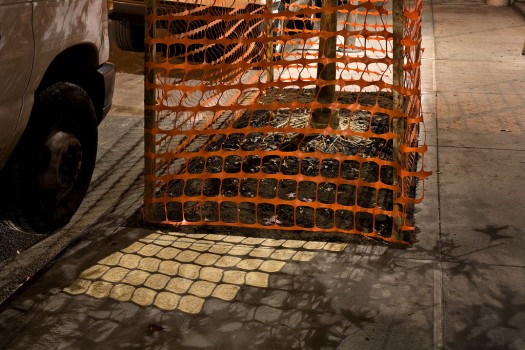
We are celebrating 15 years — and counting — of stories that are deeply researched and deeply felt, that build a historical record of what the city has been.
We are celebrating 15 years — and counting — of stories that are deeply researched and deeply felt, that build a historical record of what the city has been.
To mark the fifth anniversary of the launch of Urban Omnibus, we look at themes that have emerged in our content over time and think about what those threads reveal about the needs, desires, and priorities of the city today.
“Viewed from above, the modern city seems a miracle, a confluence of complex working systems. What connects them all — what ties the city together — is the street.” – Ulrich Franzen’s Street
The subway has been termed the lifeblood of New York City, but as the preceding quotation asserts, the city’s streets are even more fundamental to its functioning and experience. Taking up approximately one third of the city’s land, the street system outranks any other public space in terms of size and proximity to daily life: one cannot exist in the urban public realm without interacting with it, and it provides the structure within which property is developed. Thus, the street is at the figurative intersection of many interests, filling the role of transportation path, ground for recreation and community interaction, sought-after commercial real estate, and space for observation and performance.

Queens Boulevard in 2012, Looking east at 76th Road | Photo by Joe Shlabotnik
Much discussion around streetscapes today centers on their safety and vitality for a diversity of users. “Planning Corps on Queens Boulevard” explains how a volunteer group of planners and citizens sought to remake one roadway, navigating the competing interests of its different users and garnering political will.
Since the grid was first laid down, New York’s network of streets has served as inspiration and canvas for countless citizen groups, government, and design professionals who draw on a various theories and traditions to re-envision how we move through the city. Modernist architect Paul Rudolph’s plan for a Lower Manhattan Expressway — a grand highway connecting the Holland Tunnel to the Williamsburg Bridge via Broome Street — reflects what was, during its formulation from 1967 to 1972, the waning lure of high speed highways, slum clearance, and high-rise housing intended to bring order to the city. But even more than representing this planning philosophy, Rudolph’s plan articulates a vision for a future city that builds upon and relies on the city’s street design.
In his radical, 1969 proposal to reclaim Manhattan’s congested streets as open space free from cars and trucks, Ulrich Franzen offers a bold vision that also views on the street system as primary. And although some of the infrastructure proposed (a major highway) is similar to Rudolph’s, his end goal is significantly different. Franzen attributes the loss of the city’s “sustaining sense of humanity” to the car-centric nature of the street and promotes a profoundly more public street, predicated on the implementation of new modes of conveyance for both people and goods.
The struggle between the street as strict transportation network versus the street as public space has a remarkable history in the United States. David Vega-Barachowitz uses the creation and evolution of the American municipal traffic code over the past century to discuss the different actors involved in shaping how we view and use streets today and further delves into elements of street infrastructure, like the protected bike lane or “cycle track,” to illustrate our changing policies and priorities.
These visions make room for inhabitation of many kinds, among them the time-honored tradition of street vending. The many food and goods booths, trucks, and carts that dot the city contribute heavily to its sense of place — and come in handy for indulging cravings for falafel or a sudden need for an umbrella. But, as explicated by one project in the Center for Urban Pedagogy’s Making Policy Public series, street vendors face a tangled web of regulation — governing everything from cart placement on specific streets to display sizes of permits — that strongly affects both their ability to make a living and the streetscape itself.
With work should also come play. In her project NYC Uncapped, Adrienne Cortez analyzes the iconic practice of cooling off under the spray of a fire hydrant for both its environmental and social implications. Cortez proposes using the hydrants as centerpieces for public street spaces that fill the need for parks throughout the city while protecting its water resources.
Happening upon an impromptu gathering around an open hydrant is just one example of the many spontaneous and unforeseen encounters the street affords. It is a space created and observed — passively or actively — by all. For some artists, the street is also their medium: Michael Neff uses the lights and components of the streetscape to recreate the street’s shadows in chalk, asking passerby to take a closer look at this space that is both mundane and in constant flux.

16th Street between 9th and 10th | Photo by Michael Neff
The views expressed here are those of the authors only and do not reflect the position of The Architectural League of New York.